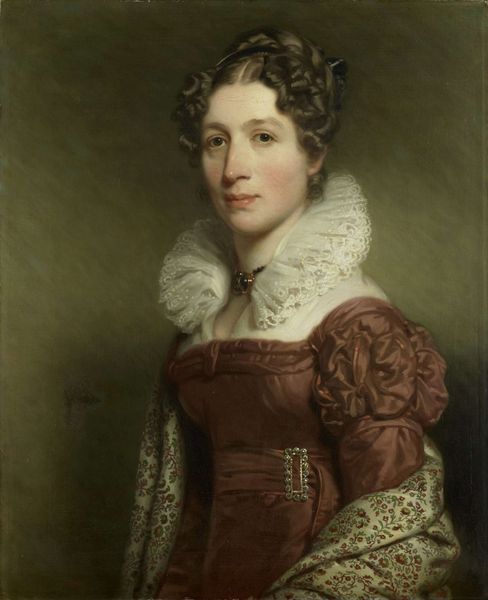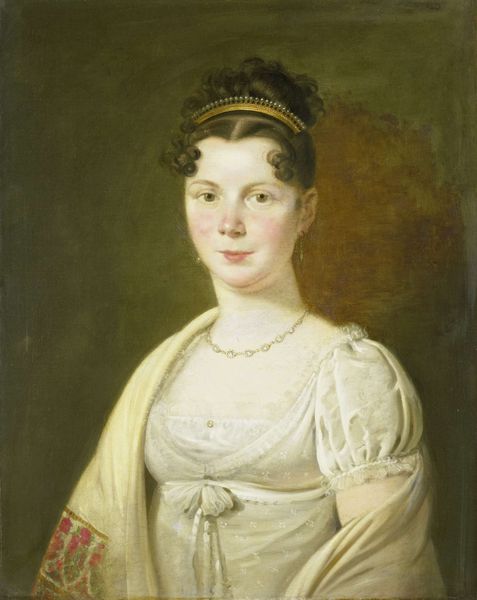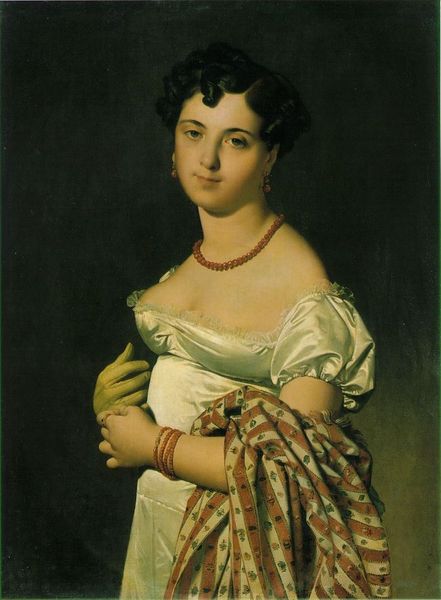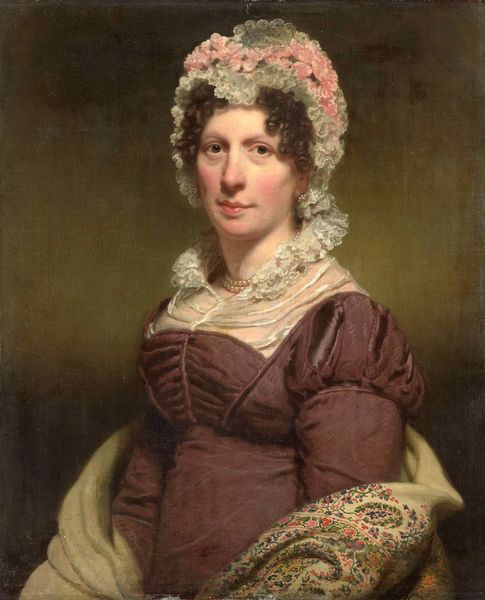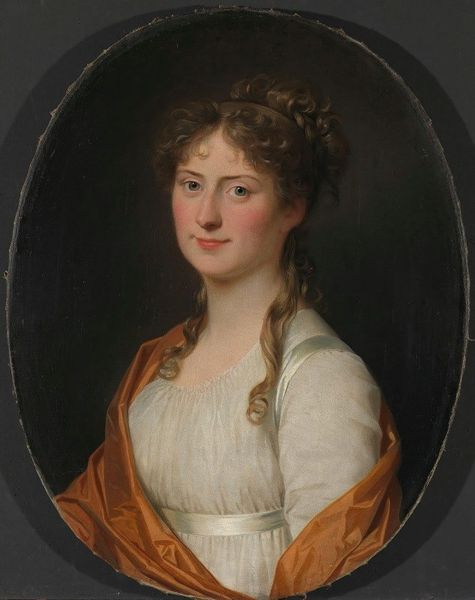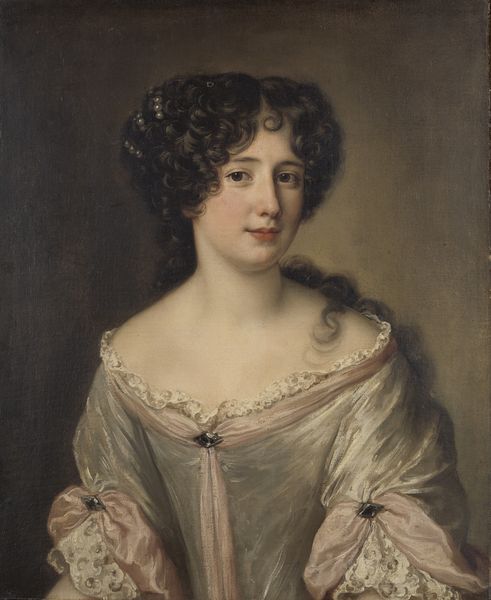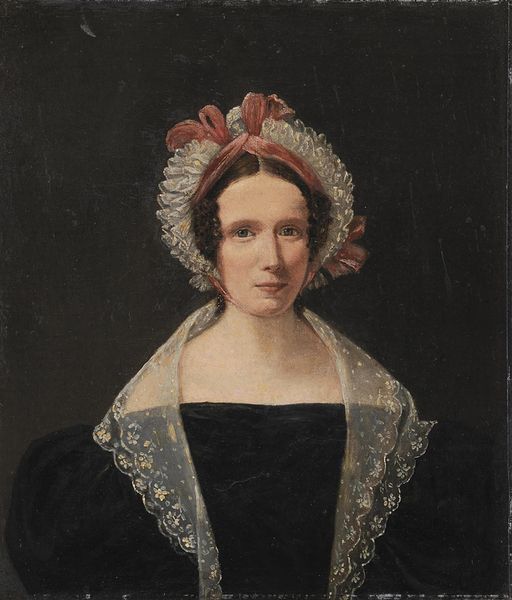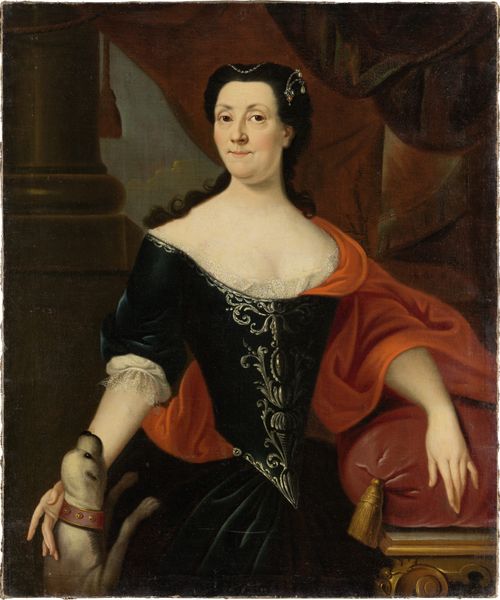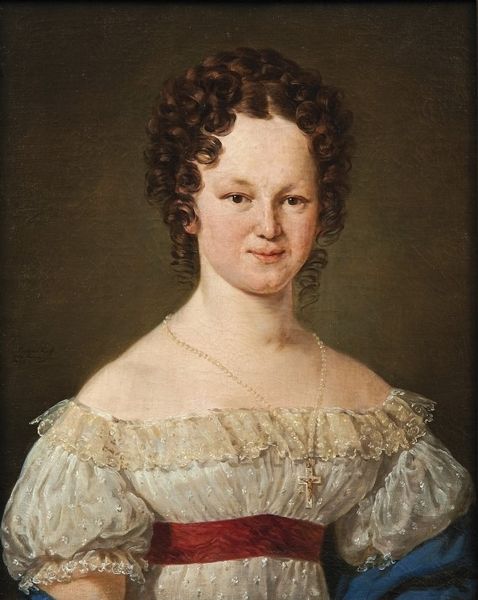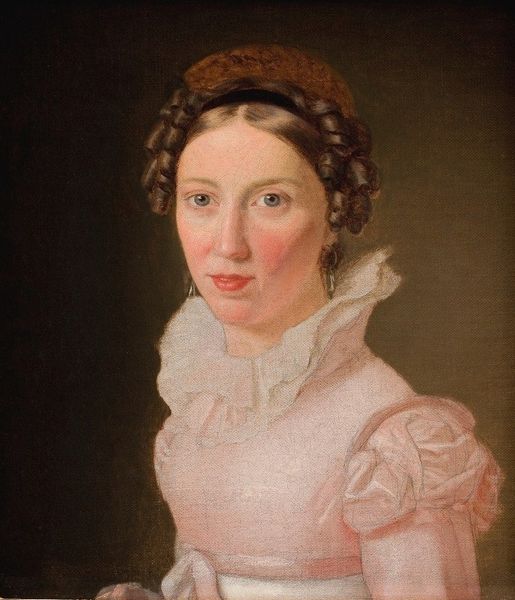
Portrait of Maria Christina Nijssen, Wife of Anthonie van der Hout 1826
0:00
0:00
christiaanjuliuslodewijkportman
Rijksmuseum
painting, oil-paint
#
portrait
#
painting
#
oil-paint
#
romanticism
#
realism
Dimensions: height 85 cm, width 67.5 cm, depth 7.8 cm
Copyright: Rijks Museum: Open Domain
Editor: This is Christiaan Julius Lodewijk Portman’s “Portrait of Maria Christina Nijssen, Wife of Anthonie van der Hout,” painted in 1826 using oil. I’m struck by how the artist captures a sense of restrained elegance. What compositional elements stand out to you? Curator: The subdued palette immediately demands attention. Note the dark background against which the subject emerges, a common technique to emphasize form. Consider the geometry—the severe verticality contrasts with the soft curves of her ruffled collar and delicate ringlets. Do you see how the eye is directed? Editor: I notice that her gaze is directed off to the side. How does that choice affect how we see her? Curator: Precisely! The averted gaze disrupts direct engagement, fostering intrigue rather than confrontation. Further, her formal pose emphasizes a rigid structure that hints at societal constraint, but her gently clasped hands inject some naturalness into this composure. The textures, such as the smooth dress and the delicate lace, each signal different levels of artistic dexterity and meaning, don’t you think? Editor: Definitely. The contrasting textures really do add a sense of depth and realism to the portrait. It's more than just a likeness; it's a presentation of status and personality intertwined. Curator: Agreed. What the painting reveals in its very construction offers a glimpse into more than meets the eye. Editor: It’s amazing how much you can understand just by looking at these formal aspects. Thanks for sharing your insights!
Comments
No comments
Be the first to comment and join the conversation on the ultimate creative platform.
